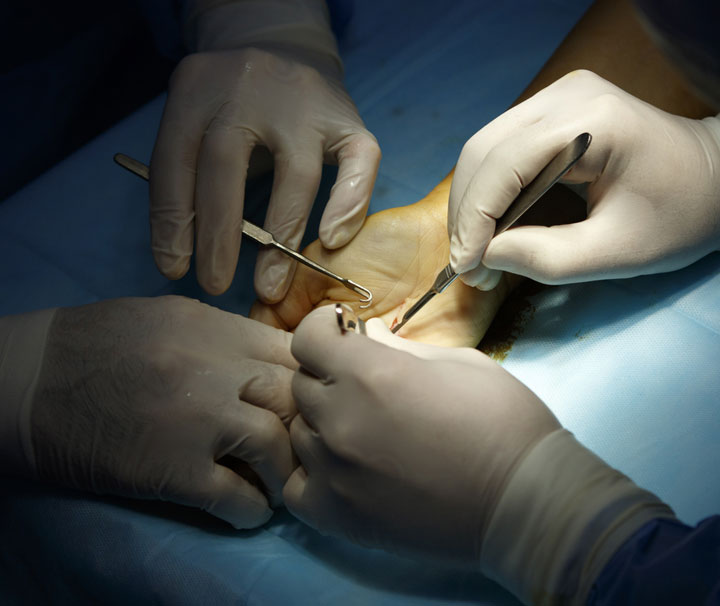
What is Hand Surgery?
Hand surgery is a broad term that incorporates a vast array of different types of surgery on the hand. Plastic surgeons who perform hand surgery attempt to restore not only the function of the hand, but try to maximize the cosmetic appearance of the hand, as well.
Surgery on the hand may be done for many reasons, including, but not limited to, the following:
- Trauma to the hand
- Rheumatic changes to the structures in the hand
- Congenital (present at birth) deformities
- Infections
What do hand surgeons do?
Hand surgery is the field of medicine that deals with problems of the hand, wrist, and forearm. Hand surgeons care for these problems with and without surgery. They are specially trained to operate when necessary. Many hand surgeons are also experts in diagnosing and caring for shoulder and elbow problems.
Hand surgeons are orthopaedic, plastic, or general surgeons who have additional training in surgery of the hand. To become members of the American Society for Surgery of the Hand, hand surgeons must take a full year of additional training and must pass a rigorous certifying examination.
Some hand surgeons treat only children; some treat only adults, and some treat both.
What are the Different Types of Hand Surgery?
There are many different types of surgeries that can be performed on the hand, depending on the underlying cause of the problem. The following is a brief overview of some of the types of surgery that may be performed:
Closed reduction and fixation
This technique may be used when there is a fracture in part of the hand, including the fingers. This type of surgery attempts to realign the fractured bone and then immobilizes the area during the healing phase. Immobilization can be done with internal fixtures, such as with wires, rods, splints, and casts.
Tendon repair
Tendons are the fibers that attach muscle to bone. Repair of tendons remains a surgical challenge because of the structure of the tendon. Tendon injuries can occur due to infection, trauma, or spontaneous rupture. Repair of a tendon may be classified as primary, delayed, primary, or secondary. Primary repair of an acute injury is usually completed within 24 hours of the injury. Delayed primary repair is usually performed a few days after the injury, but while there is still an opening in the skin from the wound. Secondary repairs may occur two to five weeks or longer after the injury. Primary repairs usually involve direct surgical correction of the injury, while secondary repairs may include tendon grafts (inserting tendons from other areas of the body in place of the damaged tendon) or other more complex procedures.
Nerve repairs
There are three main nerves that innervate the hand, including the ulnar nerve, the median nerve, and the radial nerve. Damage to these nerves from injury may result in decreased ability to move the hand and experience feeling. Some nerve injuries may heal on their own, while others require surgery. Overall, about three to six weeks after the injury is the best time for nerve repairs that are associated with other, more complicated, injuries. Surgery to investigate a damaged nerve that is not complicated by other injuries is usually performed early after the trauma, to increase the likelihood of a full recovery. If severed, the nerve may be repaired by reattaching it directly to the other end of the nerve, or by using a nerve graft (inserting nerves from other areas of the body in place of the damaged nerve) to repair the damaged section.
Surgical drainage and/or debridement
Our hands are constantly at risk for injury and infection. Infections of the hand are a common reason people seek treatment. Treatment for infections to the hand may include rest, use of heat, elevation, antibiotics, and surgery. Surgical drainage may be used if there is an abscess in the hand to help remove the collection of pus. Debridement, or cleansing of a wound to prevent further infection and to help promote healing, may be used if the infection or wound is severe.
Joint replacement
This type of surgery, also called arthroplasty, may be used in people with severe arthritis of the hand. This involves replacing a joint that has been destroyed by the disease process with an artificial joint. This artificial joint may be made out of metal, plastic, silicone rubber, or the patient's own body tissue (such as a tendon).

